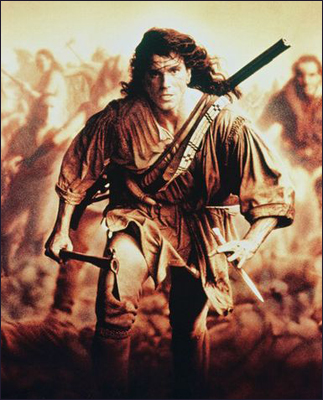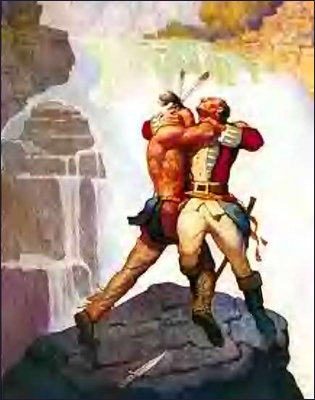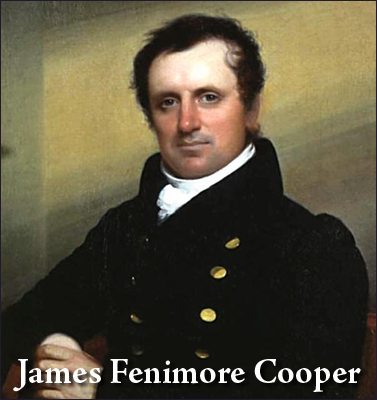“Northern Woods,” Eastern Frontier, and a Very Young Southwesterner
Monday, May 12, 2008
posted by Steve Tompkins
 Print This Post
Print This Post

For me at least, The Last of the Trunk has been a case of punch-drunk love. For hundreds of pugilistic pages the book reads like the revenge of [redacted] and the other members of the Boxer Rebellion who for the past ten years have busied themselves overthrowing the previous hegemony of the heroic fantasy and historical adventure stories in Howard studies. That the 2007 grab-bag might well have been entitled The Last, All in Trunks shouldn’t be surprising; as Patrice Louinet points out in his introduction, the Boom-era fanziners and small-pressers who cherry-picked Howard’s outtakes and leavings were hunting the sworded and the creature-featured.
That having been said, we do get away from ringside every so often. In “The Brand of Satan” the tiger-souled Brand Kenmara anticipates what Conan accomplishes in Afghulistan and Francis Xavier Gordon avoids or averts in Afghanistan:
Here in the foothills [of India], I built a vast outlaw band, composed of natives, wandering tribesmen from the Northern plains, and renegades of almost every nation. My band grew in numbers until it almost assumed the proportions of an army. I beat off English troops sent into the hills after me, and what was much more difficult, defeated a confederation of Ghurkha chiefs.
In “The Man Who Went Back,” John Pendragon (yes, the many-generations-removed-heir of Uther and Arthur) volunteers for time travel in order to effect an unfinished-business trip: he means to introduce the Saxons carving England from Britain to the rapid-fire sine qua non of trench warfare weaponry. It’s hard not to think of Hank Morgan, who presides over the rollout of Gatling guns in A Connecticut Yankee in King Arthur’s Court, although the fragment’s theme of ageless hatred, grievance-eternally-nursing racial memory, is all Howard. “The Lion Gate,” which rather unconvincingly posits a lost city of Minoan escapees from the fall of Knossos in the Himalayas, might be a distant forerunner of “The Lost Valley of Iskander” (Howard even writes “empires rose, flourished and fell there a thousand years before the armies of Macedon came through the passes”.
Would that we could learn much, much more about the desert of Dawn, with “its thousand prismatic hues and reflections,” and Thure Khan, whose dream it is to become the “foremost swordsman” of a mysterious “Thul.” But the fragment that I’ve been poring over the way Dickensians study the death-derailed Mystery of Edwin Drood (1870) can be found in the “Pre-1924 Stories” section, on page 534. It’s “untitled,” but the title of the first-and-alas-only chapter, “Iroquois and Huron,” indicates why it jumps off the page at those of us who like some regeneration through our violence.

This story is a first-person narrative, often an arresting choice on Howard’s part, and is told by a never-named European, or European-American, who’s running with White Hawk, a Mohawk “outcast from the Long House, who would be burned at the stake if he fell into the hands of his tribesmen,” and Grey Wolf, who’s revealed to possess “a delicacy most white men do not look for in an Indian.” Grey Wolf and White Hawk are friends, not father and son, but Chingachgook-and-Uncas associations are not exactly discouraged when the narrator confides “Thanks to the tutelage of the Indians, I flatter myself I made little more noise than the two red men, who were as soft-footed as lynxes and as noiseless.” Remember that we’re pre-1924 here, years before Solomon Kane would learn stealth from New World masters and El Borak would perfect his tracking skills in the open-air school of the Southwest.
The three companions are guided by a series of exultant scalp-yells to an outcropping of rock high above the forest where one man is fending off many, an ancestor of the crag from which Conan defies Picts and pirates in “The Black Stranger.” Howard doesn’t give us much to go on in terms of time and place, mentioning only “the silence of the Northern woods in mid-summer” dispelled by musket-fire and Paleface’s shout “that we were friends in English, French and a few Indian dialects.” These clues, along with the non-appearance of the word “American” and an emphasis on tribal wars between Hurons, Iroquois, Lenape, Shawness and Ottawa, lead me to suspect that we’re in Cooper’s period, the French and Indian Wars (America in its prenatal state, still enwombed but kicking lustily and dreaming of severing the umbilical cord with its baby-teeth) rather than that of Robert W. Chambers, the Revolution.

Is the solitary defender, who bests a giant Iroquois champion at close quarters, a peerless Indian warrior or a white gone even more “native” than the narrator? We’ll never know. Our three protagonists scare off the besiegers by killing a few but upon inspection the ledge that might otherwise have been the site of a last stand is now deserted, and we’re left with not just an incomplete story but a paragraph that ends in mid-sentence.
I don’t mean to oversell this fragment, and it’s certainly not a reason to challenge the consensus about the inspirational genealogies of the Pictish Wilderness stories. Chambers, whose The Maid at Arms (1902), The Little Red Foot (1921), and America, or the Sacrifice (1924) Howard owned, was surely the unindicted co-conspirator of “Wolves Beyond the Border,” as Patrice Louinet notes in “Hyborian Genesis Part III.” As for the forest devil that rose like the most sinister of phoenixes from the ashes of “Wolves,” here’s Rusty Burke on one of the fixed-up or found pieces he appended to the stories in The End of the Trail:
The title “Beyond the Brazos River” was chosen quite deliberately. This passage from a 1931 letter seems very clearly to presage the themes of Howard’s Conan story “Beyond the Black River” (the rivers in the story even begin with the same letters as the Texas rivers, Black/Brazos, Thunder/Trinity). Novalyne Price Ellis, who knew Howard well from 1934 to 1936, insisted that “Beyond the Black River” was a Texas story.
Howard’s description in that letter — “But beyond the Trinity a new kind of country was encountered — bare, rugged hills, thickly timbered valleys, rocky soil that yielded scanty harvest, and was scantily watered” — permits a semi-Pictlandish setting, if we concentrate on the “thickly timbered” part. Still, as in the past I would argue that an older, more easterly frontier haunts “Beyond the Black River” and “The Black Stranger”; think of the irrelevance/absence of horses, whereas in Rusty’s “Beyond the Brazos River,” Howard likens the Comanches, those non-mythological centaurs, to a “prairie fire” and “a sudden wind of destruction” because of the speed and surprise their mounts afforded them. And the supernatural components of all three Pictish Wilderness stories return us to the ur-colonial thoughtworld Hawthorne strove to recreate, the one the Mathers and Mary Rowlandson actually inhabited.

The Prairie: A Tale (1827), in which the octogenarian Natty Bumppo is as garrulous as ever (Gabby Hayes might have been a casting coup in a filmed version) seems to have had a place in Howard’s library. Despite the troika of White Hawk/Grey-Wolf/Nameless Narrator, we don’t know if he read the more glamorous The Last of the Mohicans or The Pathfinder, although it is fun to imagine him nodding feelingly at each new indictment in Twain’s immortal “Fenimore Cooper’s Literary Offenses.” It would be far more exciting were we somehow to discover that he was familiar with Robert Montgomery Bird’s Nick of the Woods (1837), a candidate, despite its unbearable dialect comedy and narcolepsy-inducing young lovers, for August Derleth’s blood-colored paper because of Nathan Slaughter, the demonic Jibbenainosay, as relentlessly death-dealing and sulphurously-scented a Quaker as is Solomon Kane a Puritan in “Red Shadows.” Kentucky’s Dark and Bloody Ground has never been darker and bloodier than when Slaughter prosecutes his vendetta against the Shawnee archvillain Black Vulture; Bird’s aim was a takedown of the “grand and tender sentiment” and “poetical illusion” of Cooper-style Indians.
Nor should we forget the possible contribution of a real live Kentuckian brought to our attention by Robert M. McIlvaine in his “The Influence of Joseph A. Altsheler’s Young Trailers Stories on Howard’s Pictish Wilderness Fiction” (The Dark Man Vol. 3, No. 2). Altsheler (1862-1919) is best remembered for the Young Trailers books, but ventured down Howard way with The Quest of the Four (1911), a story “of the Comanches and Buena Vista,” The Texan Scouts (1913), and Apache Gold, “a story of the strange Southwest” (if REH never met up with that last one it’s a damn shame). Beyond Young Trailers entries like The Keeper of the Trail (1916) and The Eyes of the Woods (1917), French and Indian Wars stories like The Hunters of the Hills (1916), The Shadow of the North (1917), The Lords of the Wild (1919), and The Masters of the Peaks (1918), “a story of the great north woods” entice with titles that would have been almost criminally come-hitherish to the impressionable Howard.
(Incidentally, Altsheler, whose health suffered greatly when he was circumstantially stranded in Germany just as the guns of August went off in 1914, attempted the unpropitious feat of converting the Great War into boyish adventure in his The Hosts of the Air and The Forest of Swords, both 1915)
I’ve doubtless sinned by devoting more words to the fragment than the thing itself contains, but it’s fascinating that in the prehistory of his storytelling, despite the obvious discomfort of leatherstockings in the Texas heat, Robert E. Howard — even if he had Chambers or Altsheler on his mind — spent a little time in Cooper’s neck of the woods, back when he was but a wolf-cub beyond the border.
